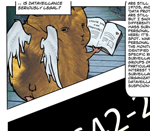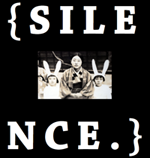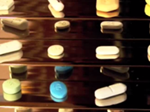Jon McKenzie, University of Wisconsin-Madison
Enculturation: http://enculturation.net/smart-media
(Published: September 27, 2012)
This special section of Enculturation features four sets of experimental media projects produced at the University of Wisconsin-Madison, three by English students enrolled in different courses I have taught over the past several years and one recent experiment of my own. As indicated in the short descriptions provided by their producers, these projects vary in content, form, medium, and function, but all can be understood as emerging scholarly genres—or what we’re calling at UW-Madison smart media. At a time when bookstores are closing, when the MLA is questioning the monograph as the dominant model for dissertations, a time when academic publishers are grappling with the many challenges posed by the web, it is little wonder that smart media such as TED talks, theory comix, video essays, and interactive installations have emerged.
Smart media supplement the traditional scholarly genres of book, article, and conference paper, adding elements closely identified with new media: digital images, video, and sound, as well as interactivity. These emerging scholarly genres mix ideas and affects, logos and graphe. If, as Jacques Derrida, Gregory Ulmer, and others have long argued, logocentric writing marginalizes graphe, smart media turns on the high-res display, cranks up the volume, and plays with the inputs and outputs. Writing in no way disappears: it remains a crucial though reinscribed track in a multimedia composition—or rather, design. For design is to digital media what composition is to writing: a craft that can be learned and taught, one that has a long history yet still produces surprises, amazement, and, admittedly, at times clichés and boredom.
At UW-Madison, I direct DesignLab, a new design support center for student media projects that works closely with the Libraries (where it is institutionally situated), our central IT unit (called “DoIT” or the Division of Information Technology), and our renown Writing Center (housed in the Department of English and directed by Brad Hughes). Like the Writing Center, we offer no courses ourselves but support students from potentially any class on campus. Opened officially this fall of 2012, DesignLab employs nine TA consultants from nine different academic programs. Such diversity allows us to focus on experience design, information design, information architecture, graphic design, sound design, and project design. DesignLab’s larger mission is to democratize digitality, just as public universities democratized literacy starting in the 19th century. It may take decades or longer to develop digital scholarship’s killer apps; smart media are early experiments.
 |
The Algo-Numeric DaughterAlexis Brown |
 |
Essays into Silence, Noise, and John CageSteel Wagstaff |
 |
Our Narcotic ModernityDevin Garofalo, Vanessa Lauber, Laura Perry, and Peter Ribic |

|
The Revelations of Dr. Kx4l3ndj3rJon McKenzie |